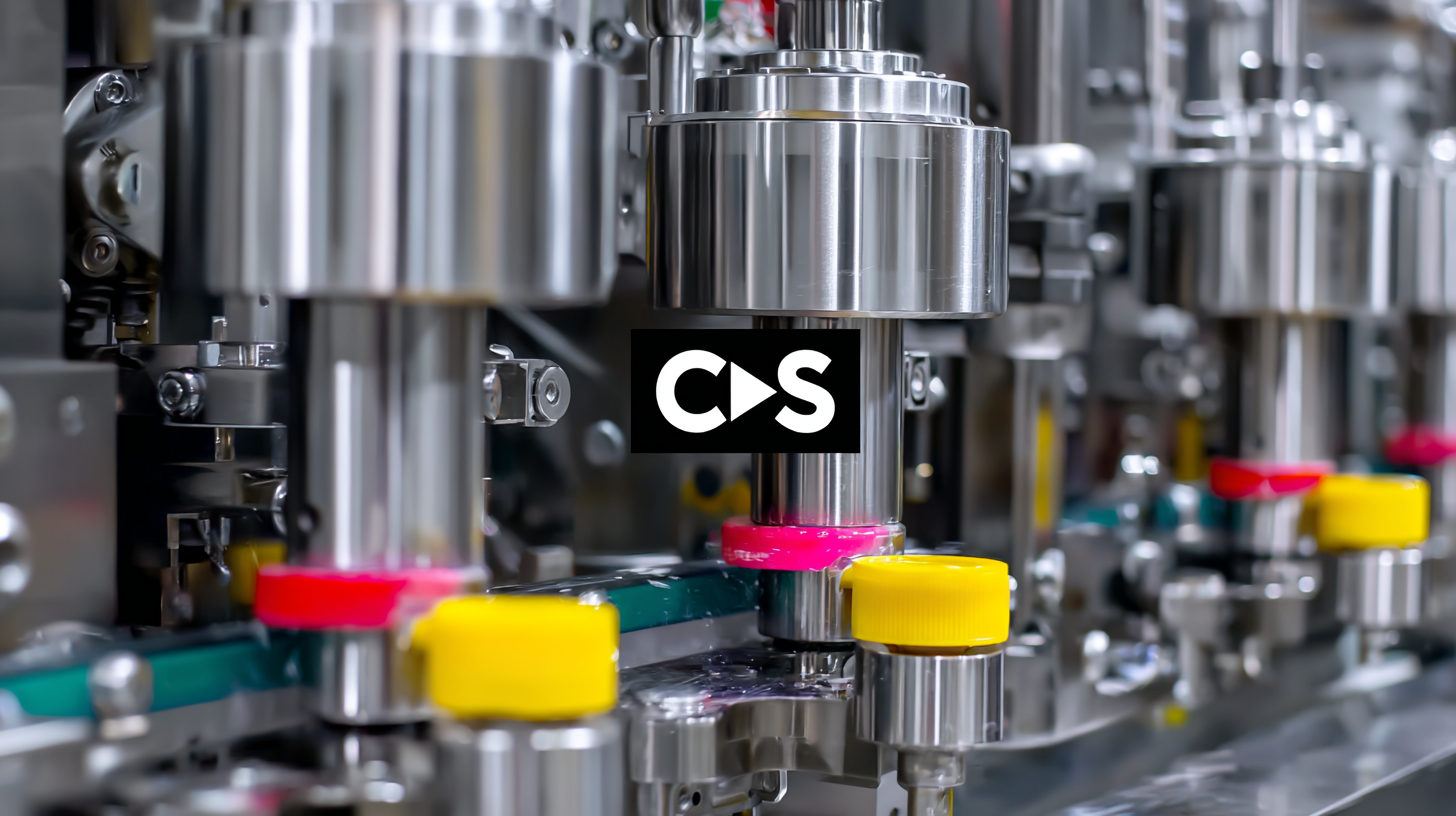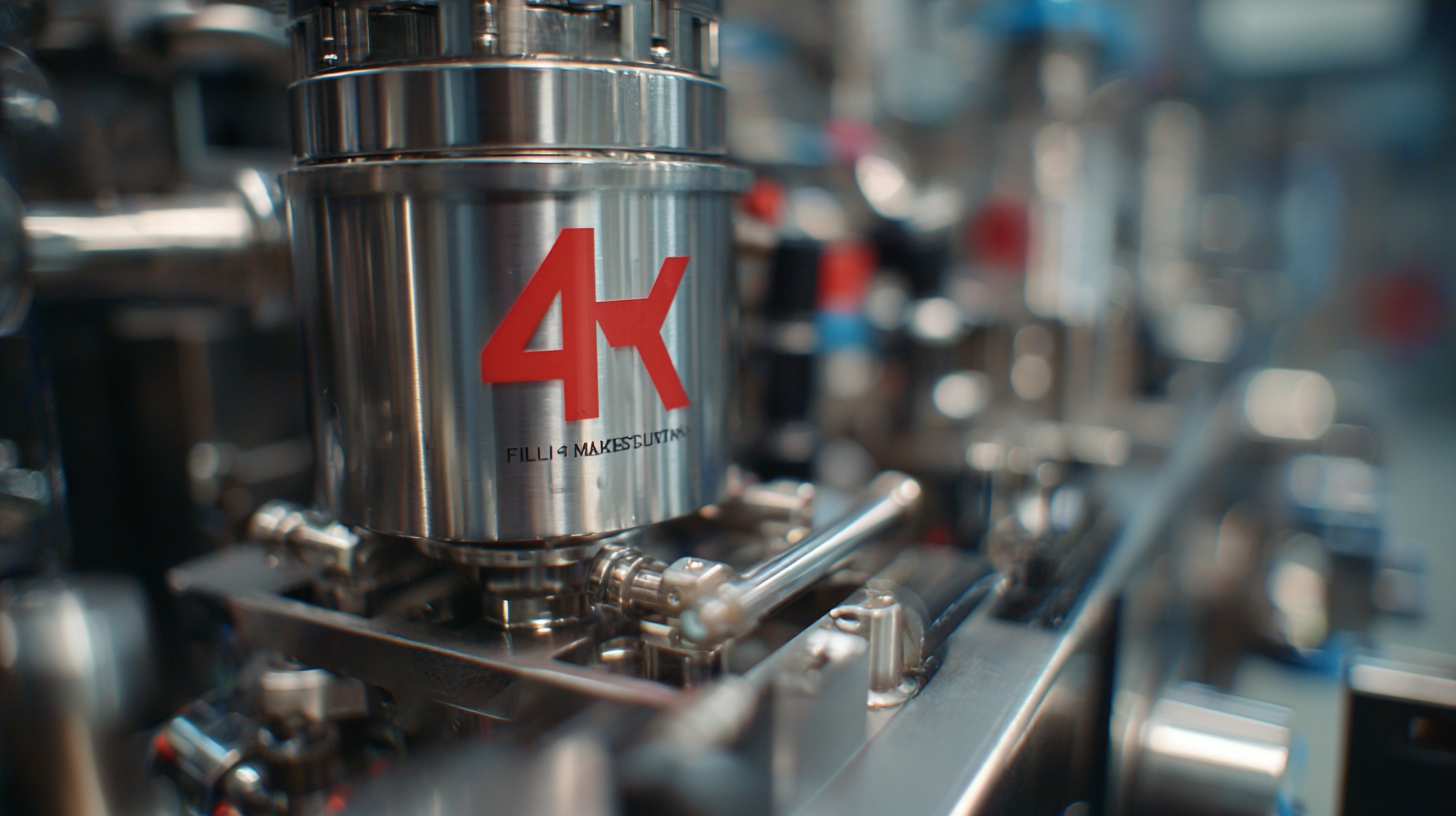How to Choose the Best Filling Machines for Your Business Needs
In the rapidly evolving landscape of manufacturing, the importance of selecting the right filling machines cannot be overstated. According to a recent report by Market Research Future, the global filling machines market is projected to reach USD 6.39 billion by 2025, growing at a CAGR of 6.32%. This growth is driven by the increasing demand for efficient packaging solutions across various sectors, including food and beverage, pharmaceuticals, and cosmetics. As businesses strive to enhance productivity and maintain competitive advantages, understanding the technological advancements in filling machines is crucial.

By 2025, innovations such as automation, smart technology integration, and enhanced precision will redefine operational efficiency, making it essential for companies to choose machinery that aligns with their unique business needs. This guide aims to navigate through these technological trends, providing valuable insights for businesses seeking to invest in the best filling machines to meet future demands.
Understanding Different Types of Filling Machines and Their Applications
When selecting a filling machine for your business, understanding the different types and their applications is crucial.
According to a report by MarketsandMarkets, the global filling machine market is projected to grow from
$5.9 billion in 2020 to
$8.3 billion by 2025, reflecting the increasing demand across various industries
such as food and beverage, pharmaceuticals, and cosmetics. This growth highlights the importance of choosing the right
equipment tailored to your specific filling needs.
There are several categories of filling machines, including volumetric, gravimetric, and pressure filling systems.
Volumetric fillers are particularly popular in the food industry,
as they ensure a consistent fill volume, crucial for compliance with industry regulations. Meanwhile,
gravimetric filling machines are preferred in the pharmaceutical
sector due to their precision and ability to handle sensitive materials. A report from Research and Markets
indicates that the demand for gravimetric fillers is expected to grow by over 8% annually, driven by the
increasing need for accuracy and efficiency in filling processes. Understanding these nuances can greatly enhance your
production capabilities and operational efficiency.
Key Technical Specifications to Consider When Selecting Filling Machines
When selecting filling machines for your business, it is crucial to evaluate key technical specifications to ensure efficiency and reliability. In 2025, manufacturers should pay particular attention to the accuracy of filling volumes, as precision can significantly impact product quality and customer satisfaction. Reports indicate that filling machines with an accuracy rate of 99.5% or higher can lead to reduced waste and increased profitability.
Another vital aspect to consider is the speed of operation. Depending on your production needs, speed can vary widely among different machines. The latest data suggests that machines capable of processing over 150 vials per minute are becoming industry standards, allowing businesses to meet high demand without compromising quality. Additionally, adaptability is essential; opting for machines that can easily switch between different vial sizes and types can save time and reduce operational costs.
**Tips:** Always assess the machine's compatibility with your current production line to avoid additional costs. Keep an eye out for innovations in automation technology, as these can enhance efficiency and reduce labor costs significantly. Moreover, ensure that the manufacturer provides comprehensive support and maintenance services to minimize downtime and keep your operations running smoothly.
Evaluating Production Capacity and Speed for Your Business Requirements
When selecting filling machines for your business, evaluating production capacity and speed is crucial. As the market evolves and consumer demands change, your machinery must not only keep pace but also anticipate future requirements. A machine with high production speed can significantly boost efficiency; however, it is equally important to align this speed with your current operational capacity and the specific needs of your production line. Understanding the anticipated volume of output can help you select a machine that maximizes productivity without compromising quality.

Moreover, as seen in various industries adapting to growth and technological advancements, maintaining flexibility in your production capacity is essential. For example, as new energy vehicles increase in popularity, the infrastructure required—such as filling machines—must also evolve to meet growing demands effectively. By carefully evaluating the speed and capacity, along with market trends and potential expansions, you can ensure that your investment in filling machines supports not just immediate objectives, but also long-term business growth.
Assessing Compatibility with Packaging Materials and Types
When selecting filling machines for your business, one crucial factor to consider is their compatibility with various packaging materials and types. According to a report by MarketsandMarkets, the global packaging machinery market is projected to reach $45.4 billion by 2026, highlighting the growing importance of tailored machines that can handle diverse materials efficiently.
Different materials, such as glass, plastic, and metal, have unique properties that affect how filling processes are executed. For instance, glass bottles may require specific machines to prevent breakage, while flexible pouches might need technology that can accurately dispense liquid without damaging the package.
Moreover, the type of product being filled also influences the choice of machinery. A recent study indicated that liquid filling machinery accounted for over 30% of the total packaging machinery market share in 2022. This underscores the necessity for businesses to assess whether their filling machines are equipped to handle their specific products, be it viscous liquids, granules, or powders. By aligning machine capabilities with both the packaging materials and the product types, businesses can optimize efficiency and reduce waste, leading to improved profitability and consumer satisfaction.
Cost Analysis: Balancing Budget and Quality in Filling Machine Selection
When selecting filling machines for your business, conducting a thorough cost analysis is crucial to ensure that you strike the right balance between budget and quality. The initial investment in machinery can be significant, but it's essential to consider the long-term operational costs, maintenance, and potential downtime. A cheaper machine may save you money upfront but could lead to higher expenses due to frequent repairs or slower production rates, ultimately impacting your bottom line.
Quality should never be compromised for the sake of cost. Investing in a reliable filling machine not only guarantees consistency in product output but also enhances the overall efficiency of your production line. It's wise to evaluate the machine's reliability, durability, and the manufacturer's reputation when factoring in quality. A well-engineered machine can lead to reduced wastage, less rework, and a better product that meets customer expectations, which is invaluable for maintaining a competitive edge in the market. Balancing these factors will help you make an informed decision that aligns with your business needs and financial capabilities.
